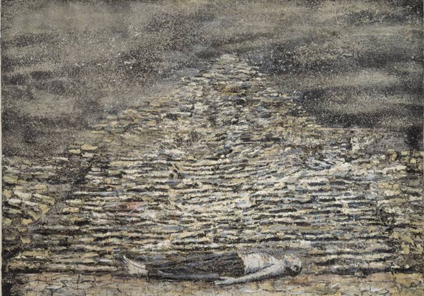It's a battle post-war German artists are still fighting: frowned on for mentioning Nazism, yet unable to find myths that are not tainted by it. Andrew Graham-Dixon considers the plight of Anselm Kiefer
In the late 1960s a young German called Anselm Kiefer, an artist of no great repute at the time, took a series of photographs of himself performing the Nazi Sieg heil in several locations scattered across Europe. A forlorn and absurd figure, pictured at a distance which aptly diminished him, Kiefer's Fascist alter ego was to be seen variously dwarfed by the Colosseum, lost in the ancient city of Paestum or standing ramrod straight in the main city square of Montpellier scaring a few harmless passers- by with his goose-stepping antics.
These bitter, mock-heroic parodies of the figure of the all-conquering National Socialist were, predictably, much misunderstood and much reviled when Kiefer first published them under the sardonic title of Occupa-tions. His mocking re-enactments of militant Nazism as sad farce were misread as clarion calls to Fascist revival. The heavy irony that lay behind them was ignored by those in post-war Germany (and they have been the majority) who like to believe that a willed amnesia is the best form of national atonement for atrocities perpetrated under the Third Reich.
After the Second World War, the German artist with a sense of history has, with depressing regularity, been accused of stoking up a fire whose ashes he has only wanted (and needed) to rake over. Kiefer, who is now one of the two or three most celebrated living German painters, has probably done more than anyone else to clarify the predicament of the post-war German artist - and also, for that matter, novelist or poet or film-maker or philosopher or musician. He is the epitome of...


